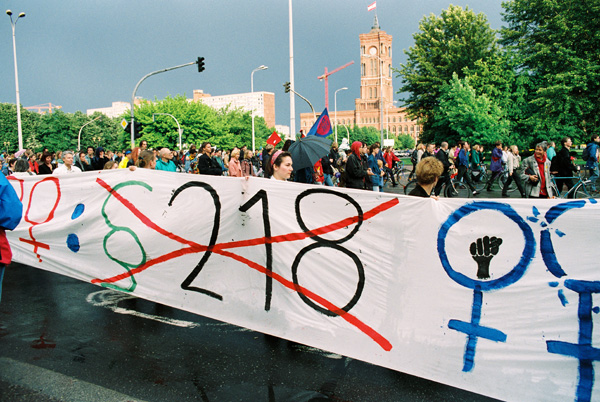Source

Source: REGIERUNGonline
Abortion was one of many contentious issues left out of the negotiations on German unification. Representatives of the two German states feared that debates on difficult social issues would derail the unification process, and they decided to tackle these issues at a later date. Thus, even after unification, different abortion laws initially applied in the Western and Eastern portions of Germany. The “indication” regulation [Indikationsregelung] applied in the West, where abortion was permitted for medical or social reasons, while the more liberal “periodic” regulation [Fristenregelung] applied in the East, where women were able to terminate pregnancies – without providing a reason – within a prescribed time period, namely the first trimester. The Unification Treaty stipulated that legislators needed to create a uniform abortion law for all of Germany by December 31, 1992. On June 26, 1992, the Bundestag passed the Maternity and Family Welfare Act, which legalized abortion during the first trimester for women who found themselves in “an emergency and conflict situation” and who underwent counseling at least three days in advance. Accompanying social measures were introduced to make it easier for women to keep their children. The new law was soon challenged before the Federal Constitutional Court, which declared major passages unconstitutional in May 1993. The photo shows members of various Berlin women’s organizations demonstrating against the court ruling in front of the “Red Town Hall.” On June 29, 1995, legislators passed the Amendment to the Maternity and Family Act, which placed stronger emphasis on the protection of unborn life.

Source: REGIERUNGonline